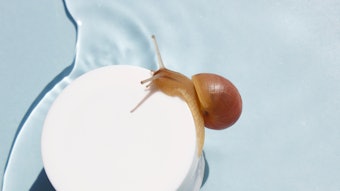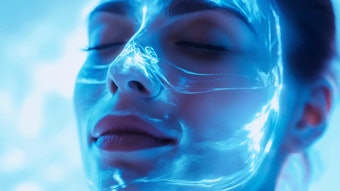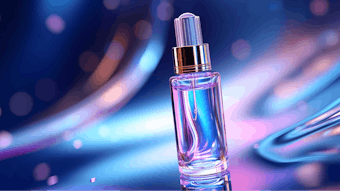This column focuses on a cursed word in the cosmetics industry—cosmeceuticals. It is a word that I believe should never have been invented but that at least a few cosmetic colleagues claim to have coined.
The word suggests cosmetic products with a close-to-medical activity profile; however, a topically applied product is either a medical or cosmetic product, it cannot be both and it certainly cannot be in between. A product cannot be half medicinal and half cosmetic in the same sense that a woman cannot be half pregnant. However, there can be an exception to the above statement...
Oftentimes it is the claim that makes the skin care product medicinal, whereas without that claim, the product is classified as cosmetic. I am sure that many in the personal care industry would agree that this situation is a little absurd since it suggests that the active ingredient reads the label and subsequently decides whether it will cure or simply clean, perfume, change appearance, correct body odor or protect or keep the user in good condition.
I admit, we have very smart active principles today but this is giving our quasi-drugs a bit too much credit. An active ingredient is much like an average man and does what it does and nothing more; and what the average man does is determined by the quality of women surrounding him. Similarly, whether an active is active is determined by the excipients in the formulation surrounding it.
A certain type of man will always try to impress the women in his surroundings, irrespective of being married, single or tired, whereas another type of man will always be shy, dazed, timid or introverted. That is in his character. Certain types of active ingredients are very active, whereas others will do close to nothing--even if pushed into the skin by surrounding excipients. We call this intrinsic activity.
To further convince the industry of the similarities between men and active ingredients, just consider which of the two genders men generally think is most important, and what component that cosmetic marketers consider to be the most important in any efficacious cosmetic product. I rest my case; yet it still does not explain why I am so negative about the use of the term cosmeceutical. My reasons are actually quite pragmatic.
In all honesty, it is difficult to differentiate between a cosmetic and a drug, if we accept that the claim made for the product can determine in which category it belongs. The industry should be reminded that the original definition of a cosmetic or drug was established before the discovery of DNA in 1953. Of course, if the definition of a calculator originated from the time that we were still using the abacus, how could we anticipate multifunctional computers to fall somewhere within that definition? The problem should not be solved by introducing a "super-abacus," aka the cosmeceutical, but rather by changing the definition.
If the line between a medical and cosmetic product is fuzzy, why should the industry be able to differentiate between a cosmetic active and a cosmeceutical on the one hand, and a cosmeceutical and a drug on the other? The cosmetic industry should update its definitions for the terms cosmetic and medical to bring them into the 21st century; that should solve the problem. In my opinion, the term cosmeceutical is no longer sustainable and should be banned. The only question is: Will a new definition arise before the 21st century is over?
In the meantime, the cosmetic industry should shift its attention to completely different things. It is well-known that green chemistry and sustainability are of utmost importance today. Also, the cosmetic industry aims to be CO2 neutral. I have yet to hear anyone address the enormous waste that happens in the cosmetic industry. In my May 2008 column in Cosmetics & Toiletries magazine, I discuss how the industry wastes an average of 99% of all active ingredients applied to the skin. Why? Because on average, only 1% penetrates. If these ingredients are so important and hence so expensive, why do we allow 99% of them to be wasted?
And this is only the economical aspect; there is also an environmental aspect of wasting 99% of a raw material. Techniques are available to allow cosmetic formulators to optimize the skin delivery of an active ingredient, i.e., to get men to do what they are supposed to do--work hard for their money, if you allow me to continue with my analogy.
The cosmetic industry can also get more for less. When formulators formulate cleverly, they use significantly lower amounts of active ingredients without any loss of efficacy. The trick is to find, for the active ingredient, the minimum concentration with maximum activity (MICMAC). Rather than spending time inventing new nonsense words like cosmeceuticals, neutraceuticals, botaniceuticals, naturaceuticals, organoceuticals, nanoceuticals, oligoceuticals, pepticeuticals and vitaceuticals, the industry should invest time and money in identifying MICMACs. This will contribute to increasing the company’s profits as well as contribute to waste reduction, sustaining the environment. This will happen, but it is uncertain when.
For those who are not yet convinced, watch a man or active ingredient continue to behave chauvinistically and see how long they last. In my opinion, cosmeceuticals are no longer sustainable; therefore, the industry should MICMAC its active ingredients and in doing so, sustain the environment.
I dedicate this column to all smart cosmetic formulators that help to sustain the environment as well as company profits--female or male, as long as you are smart, because only then are you sustainable.
Prof. Johann W. Wiechers, PhD
Technical Adviser, Cosmetics & Toiletries magazine
Independent consultant for cosmetic science, JW Solutions










